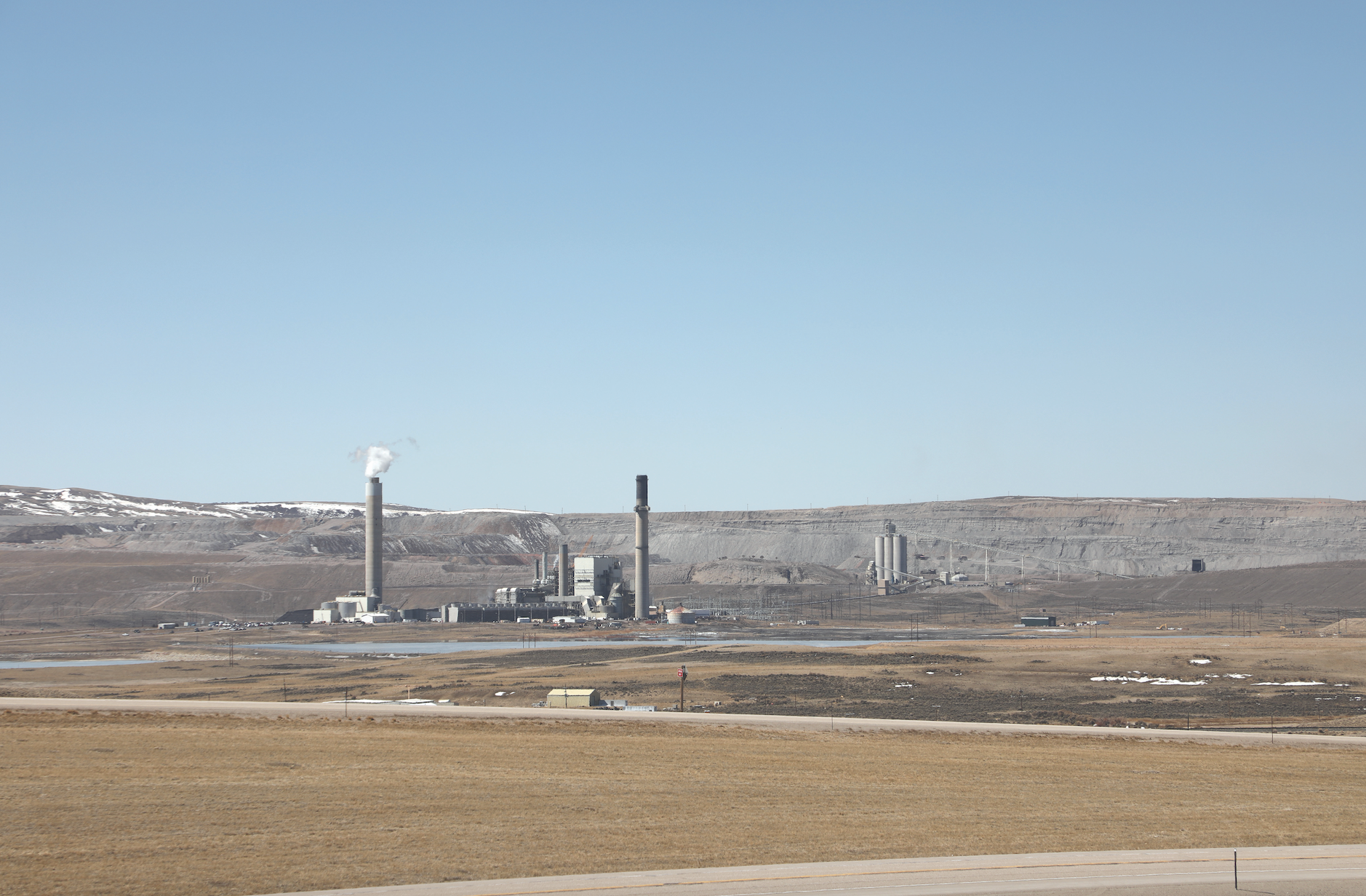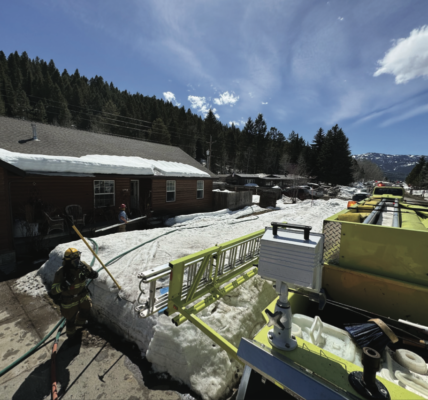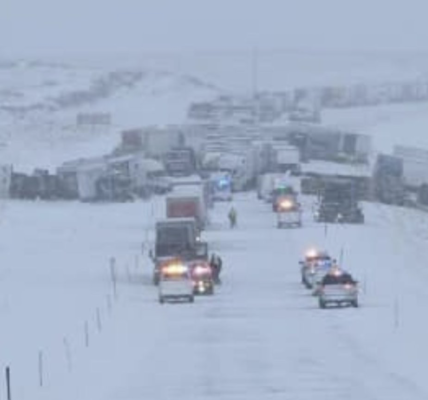
By Aedan Hannon
Casper Star-Tribune
Via- Wyoming News Exchange
CASPER — A panel of judges sided with Wyoming and the state’s largest electric utility in a battle over haze pollution last week finding that the Environmental Protection Agency erred and overstepped its authority when it rejected the emissions plan for a Gillette power plant.
The decision serves as a setback for the Environmental Protection Agency and environmental groups, which sought more stringent controls on a series of coal-fired power plants, amid a continued fight over air pollution between Wyoming and regulators.
However, the 10th U.S. Circuit Court of Appeals affirmed the EPA’s broad power under the Clean Air Act and left the door open to future emissions restrictions in Wyoming.
At issue were PacifiCorp’s Wyodak and Naughton coal-fired power plants near Gillette and Kemmerer.
In March 2014, PacifiCorp and the state of Wyoming petitioned the 10th Circuit to overturn the EPA’s decision striking down Wyoming’s “state implementation plan” for regulating nitrogen oxides, a contributor to haze, from Wyodak. Wyoming and PacifiCorp argued that the EPA should approve the plan because the EPA failed to give the state the latitude required by the Clean Air Act, the sweeping law that controls air quality in the U.S. using a “cooperative” approach between states and the federal government.
At the same time, a collection of environmental groups challenged the EPA’s decision to approve the state’s emissions plan for PacifiCorp’s Naughton power plant.
Under the EPA’s 1999 Regional Haze Rule required by the Clean Air Act, the federal government and states must work together to reduce air pollution around national parks and wilderness areas like Yellowstone.
The National Parks Conservation Association, Sierra Club and Powder River Basin Resource Council criticized the EPA’s decision and urged the court to reject the agency’s approval of Wyoming’s Naughton power plant emissions plan. The groups insisted the EPA should have required the plant to retrofit more effective pollution control technology.
Tenth Circuit Judges Timothy Tymkovich, Robert Bacharach and Joel Carson ruled against both the EPA and the environmental groups.
They said the EPA incorrectly applied rules that are mandatory only for large power plants to the smaller 335-megawatt Wyodak power plant. According to the judges, Wyoming has “broad discretion” in analyzing and determining state haze emissions plans for smaller power plants as long as they meet the minimum requirements of the Clean Air Act.
“We do not question that the EPA has a role to play. Indeed, the Clean Air Act plainly provides for agency oversight,” the judges wrote. “But the amount of oversight for regional-haze [state implementation plans] varies based on the size of the powerplant.”
The three-judge panel also ruled that the environmental groups couldn’t show that the EPA “acted arbitrarily and capriciously” in approving the state’s plan for PacifiCorp’s Naughton power plant. They again pointed to Wyoming’s authority to assess and create emissions plans for power plants below 750 megawatts.
PacifiCorp did not respond to a request for comment, but Gov. Mark Gordon lauded the decision.
“It is gratifying that the Court recognized this example of Federal overreach into what is the rightful domain of the State of Wyoming,” Gordon said in a statement. “Just because the Federal government may think it knows best, that doesn’t mean it can trample on the state’s rights. I hope the Federal government takes a serious look at what this decision means in terms of state primacy.”
During the petition process, the Petroleum Association of Wyoming submitted an amicus brief in support of both the state and PacifiCorp.
Ryan McConnaughey, the group’s vice president, said the state’s oil and gas industry was concerned about the price increases that would come if further requirements were imposed on the power plants.
“Electricity costs for the oil and gas industry in Wyoming are second only to labor costs,” he said. “Anything that would increase those costs even more on our members is something that would be detrimental to the industry.”
In Wyoming’s haze plan, the state and PacifiCorp pointed to the cost of retrofitting Wyodak among the principle reasons for not requiring more robust pollution controls, a point that Gordon’s office highlighted in a press release applauding the judges’ decision.
In petitioning the 10th Circuit, the environmental groups were pushing for the EPA to require a specific retrofitted technology for both the Wyodak and Naughton power plants called selective catalytic reduction. It works by breaking down nitrogen oxides into water and nitrogen gas.
Jenny Harbine, the lawyer for the environmental groups and the managing attorney for Earthjustice’s Northern Rockies office, said the technology generally reduces nitrogen oxide emissions at power plants by roughly 85%.
“The court’s decision not to endorse more effective controls for the Wyodak and Naughton facilities in this round is a missed opportunity and an unfortunate one,” she said. “However, EPA still has a job to do to require emissions reductions from Wyoming sources.”
A spokesperson for the EPA’s Region 8 office covering Wyoming said in an email that the agency was reviewing the court’s decision.
While the environmental groups were dismayed by the court’s ruling, they pointed to the court’s broader decision confirming the EPA’s oversight over state regional haze plans and referring the case back to the agency. In their opinion, the judges’ said the EPA could still reject the state’s haze plan for the Wyodak power plant; they just couldn’t use the agency’s nonbinding rules for smaller plants as the reason.
“The court didn’t just say for Wyodak, ‘That’s the end of the matter,’” Harbine said. “Instead, the court said, ‘Take another look at this EPA and decide whether or not the state’s decision not to require pollution reductions from the Wyodak plant was reasonable based on other factors.’”
In 2019, PacifiCorp revealed it planned to expedite the shuttering of two power units at Naughton – the two units in question in the court case – moving their retirement date to 2025 amid the utility’s transition to more renewable energy.
According to the National Parks Conservation Association, PacifiCorp’s Wyodak and Naughton power plants are among the top 10 contributors to regional haze pollution in Wyoming.
“Clean air matters. It matters to our national parks, it matters to people,” said Ulla Reeves, the campaigns director for the National Parks Conservation Association’s clean air program.
The 10th Circuit’s decision will likely continue a protracted battle between Wyoming and the EPA over air pollution.
Last year the EPA proposed to reject a revised version of the state’s original regional haze plan after Wyoming updated its plan to avoid installing more costly emissions controls on the Jim Bridger power plant in Point of Rocks. The state also took issue with the EPA’s decisions last year to reject and then delay its rejection of the state’s ozone mitigation plan after the agency concluded that the state failed to address the movement of ozone across its borders.
Roughly every 10 years, states must update their regional haze plans.
Even as Wyoming and the EPA have failed to come to agreement on the state’s first plan, Wyoming has been working since 2017 on the second round of its plan.
Both Reeves and Harbine took issue with the state’s second proposal, which concluded that Wyoming needed to take no additional measures to reduce haze pollution.
With the 10th Circuit’s backing of the EPA’s oversight authority, Reeves and Harbine said it would be up to the federal agency to ensure that Wyoming addresses haze pollution.
“Wyoming is not really stepping up to the plate to reduce significant haze causing emissions that are adding to pollution that harms Grand Teton and Yellowstone and other parks,” Reeves said. “Air pollution knows no boundary.”





